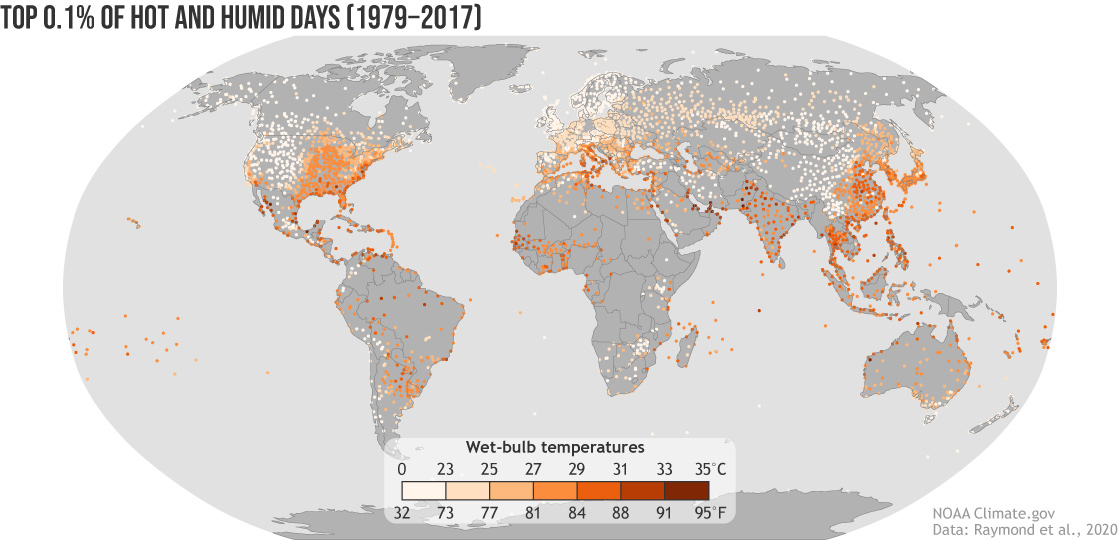Climate change will make some places on Earth uninhabitable within the next 30-50 years. This theory is supported by a NASA study that underlined the dangers for humans from a rise of average temperatures. If the phenomenon will continue, some places on our planet will reach climatic conditions that are incompatible with human life.

Heat index
To understand in which areas it will be impossible to live, the American space agency used the heat index, a measure of the air temperature perceived by our body, taking into account relative humidity. The calculation takes into account shaded areas and reflects how uncomfortable we feel when it is hot and humid.
The heat index, however, needs a calibration. So, it is a measure, at least in part, subjective. Different countries use different versions that lead to different results. This is the reason why scientists use another variable, the wet-bulb temperature.
La temperatura a bulbo umido
This measure allows us to understand our body’s ability to cool itself through sweating when the weather is hot and humid. So, the index tells us when weather conditions can become harmful to human health.
The wet-bulb temperature is calculated using measurements from the electronic instruments of weather stations. Scientists believe that the highest wet-bulb temperature index a human being can resist is 35 degrees Celsius (or 95 degrees Fahrenheit) for a period of six consecutive hours.
These temperatures are rising all over the world and the limit has already been passed on several occasions. In particular, since 2005, it has happened nine times and with more and more frequency.
Studies have produced some remarkable results. The hotter it gets, the more our body struggles and the more it needs to sweat to cool itself down. When the wet-bulb temperature comes close to the internal temperature, the ability to cool down is lost. This provokes changes in the body and the consequences can be lethal.
The American space agency has also underlined that the risks of death also exist for temperatures lower than 35 degrees Celsius. To give just one example, the heat wave that hit the United States in 2021 killed about 1,400 people, despite the fact that the wet-bulb was not higher than the maximum limit.

Future Predictions
Despite the quality and sophistication of the studies, it is very complex to accurately predict when global humid temperatures will regularly surpass 95 degrees Fahrenheit (35 degrees Celsius) and therefore when climate change will make places uninhabitable. This is a gradual process that happens at different times in different places.
However, it is possible to make a prediction: some regions could surpass these temperatures in the next 30-50 years.
In particular, the areas that are most at risk by 2050 are South Asia, the Persian Gulf, and the Red Sea.
Extending the horizon to 2070, Eastern China, Brazil, and some areas of South-East Asia are among the countries at risk.
This NASA study is just the latest warning of the catastrophic consequences of climate change for humanity. It is time to act!
Cover image: photo via Canva PRO




